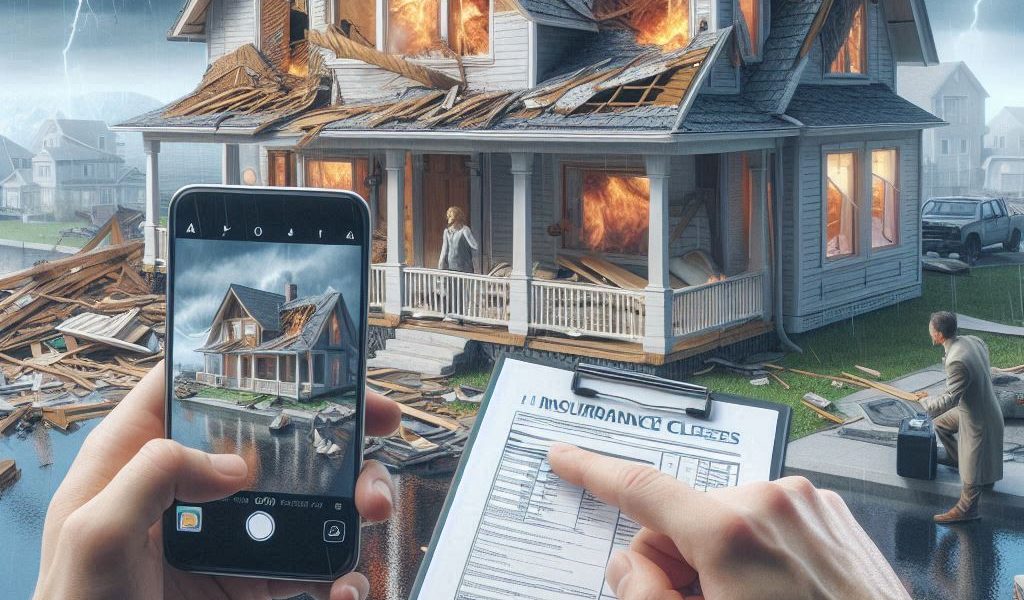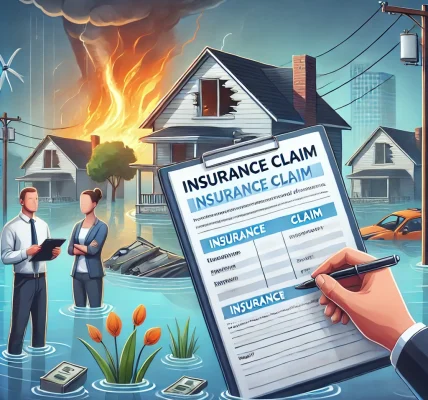Natural disasters such as hurricanes, floods, earthquakes, and wildfires can cause significant damage to properties, leading to financial and emotional distress. Having an insurance policy is essential, but knowing how to handle claims effectively can make a huge difference in recovering your losses quickly and smoothly. In this guide, we will walk you through the step-by-step process to handle natural disaster insurance claims efficiently.
1. Understand Your Insurance Policy
Before disaster strikes, ensure you fully understand your insurance policy. Different policies cover different types of disasters. Here are key points to check:
- Types of coverage: Does your policy cover floods, earthquakes, or hurricanes?
- Deductibles and limits: Know the maximum payout and your out-of-pocket costs.
- Exclusions: Some natural disasters may not be covered unless you have specific add-ons.
- Claim process: Familiarize yourself with the steps required to file a claim with your insurer.
2. Document the Damage Immediately
Once it is safe, assess and document all damages before making any repairs. This is crucial for a successful claim:
- Take clear photos and videos of the damage from multiple angles.
- Make a list of damaged items with details like purchase date, cost, and condition before the disaster.
- Keep any receipts for emergency repairs or temporary accommodations.
3. Notify Your Insurance Company Promptly
Most insurance companies have a time limit for filing claims after a disaster. Contact your insurer as soon as possible and provide them with the following information:
- Your policy number
- Date and type of disaster
- A brief description of the damage
- Contact details for easy communication
4. Prevent Further Damage
Insurance policies often require homeowners to prevent additional damage after a disaster. This means you should:
- Cover broken windows or damaged roofs with tarps.
- Move undamaged belongings to a safer area.
- Keep receipts for temporary repairs as insurers may reimburse these costs.
5. Work with the Insurance Adjuster
Once you file a claim, your insurer will assign an insurance adjuster to inspect the damage. Be prepared for their visit by:
- Providing all necessary documentation, including photos, lists, and receipts.
- Walking them through the damaged areas and pointing out critical losses.
- Asking for an explanation of the claim process and expected timelines.
6. Keep Detailed Records
Maintaining a well-organized record of your claim will help avoid disputes and delays:
- Record all conversations with your insurer, including dates and names of representatives.
- Keep copies of emails, letters, and claim forms.
- Track claim processing time and follow up if there are delays.
7. Be Ready to Negotiate
Insurance companies may offer a settlement that is lower than expected. If you believe your claim deserves a higher payout:
- Review your policy to ensure you’re getting the correct compensation.
- Get independent repair estimates to compare with the insurer’s assessment.
- Consider hiring a public adjuster or legal expert if disputes arise.
8. Seek Government Assistance If Needed
In case of large-scale disasters, government agencies like FEMA (Federal Emergency Management Agency) or local relief programs may offer additional financial support. Check official websites for assistance programs that can help with recovery costs.
Conclusion
Handling natural disaster insurance claims effectively requires preparation, documentation, and persistence. By following these steps, you can maximize your claim settlement and recover faster. Stay informed about your insurance policy, act quickly after a disaster, and don’t hesitate to seek expert help if needed.
By being proactive, you can ensure a smoother claims process and get back on your feet as soon as possible. If you found this guide helpful, feel free to share it with others who might benefit from these insights!




